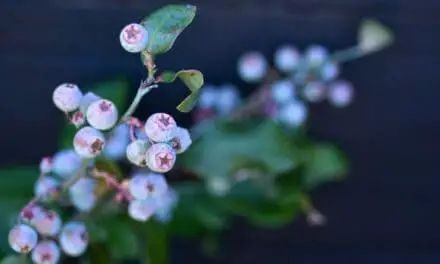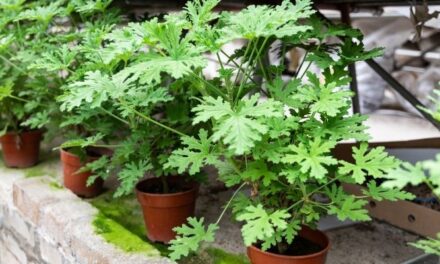If you’re choosing bulbs, tulips are a wonderful choice that can bring your spring garden to life with a vast array of vibrant colors.
But what do you do if your tulips are coming up with leaves and no flowers?
Should you leave them be till next year and hope they’ll come into their own or should you dig them up and start all over again?
Table of Contents
Will Blind Tulips Flower Again?

Blind tulips might flower again the following year, but it is unlikely.
In general, it would be better to remove the bulbs and start again with new tulips and better soil.
Tulips coming up blind mainly happens because of poor growing conditions and/or improper care.
There can be a variety of reasons why this happens and pinpointing and fixing the exact issues can be a challenge.
And even if you can correct the problems, there’s no guarantee they’ll flower again in the future because tulips are not very long-lived flowers on the whole.
What Causes Blindness In Tulips?
There can be quite a few reasons why tulips come up blind and some are easier to put right than others.
Related Article: Why Do Tulips Die So Fast? (And How To Keep Them Blooming)
The Bulbs Are Too Close To The Surface.
This encourages your tulips to produce bulbils instead of flower buds and they will put most of their energy reserves into the bulbils, and will not flower properly.
Bulbils are baby plants that are sometimes grown on the tulip’s stem instead of flowers.
If this happens, your tulip is unlikely to produce a flower the following year either.
Your bulbils might flower, but not for a couple of years, so you won’t have blooming tulips for quite some time if this happens.
Your Tulips Were Not Properly Cared For After They Bloomed Last Time
If you want your tulips to come back strong the following year, it is important that you deadhead them as soon as their flower dies.
As soon as the petals begin to die and fall off of your flowers, the flowers need to be cut off so that your tulips don’t set seed.
If they start producing seed, they will energy will be diverted from the bulb which may cause your tulips to come up blind the next year.
Only remove the flowers but allow the rest of the foliage to die back naturally over the next 6 weeks or so.
They Are A Hybrid Species
If you do not have a traditional tulip species (such as the Darwin), they may not come up year after year.
Many types of hybrid tulips are engineered to produce massive, brilliant flowers but not to keep coming back year after year.
Most hybrids will only last for a few years before they start coming up blind, at which point you need to replace them.
They Have A Fungal Infection
If your winters are too mild and wet for tulips, they are vulnerable to fungi attacking the bulbs.
This will cause them not to flower because they aren’t healthy enough to do so.
It is not really something you can fix, and they are unlikely to flower the following year for the same reasons.
Infections can also be a problem if you plant your tulip bulbs too early.
Tulips like it to be pretty cold and wet not long after you plant their bulbs.
Plant bulbs during the fall, around 6 to 8 weeks before you expect the first frost.
Or in milder climates, plant bulbs in late November to early January.
They Are Not Healthy Bulbs
Take a good look inside the bag as you’re buying your bulbs.
Make sure they are big and that you can see lots of healthy roots growing from them.
And don’t buy your tulip bulbs too long before you intend to plant them; they aren’t designed to last for long above ground.
They Don’t Have Enough Nutrients
Tulips require plenty of phosphorus in order to flower properly.
If you think that the soil may be lacking, try a phosphorus-rich fertilizer, and see if your tulips flower the following year – it’s possible that they will, as they’ll have the nutrients they need.
They Are Too Wet
Tulips prefer to be dry, and can’t handle waterlogged soil that doesn’t dry out properly.
If your tulips are spending all their time damp, the bulbs will weaken and they won’t have the energy to produce flowers.
They Are Being Attacked By Pests
If something is harassing and weakening your tulip bulbs, again, they won’t be able to flower.
The biggest culprits are mice and squirrels, but these will usually dig the bulbs up, so they probably aren’t responsible if you’re getting leaves but not flowers.
As you can see, there are quite a lot of reasons that tulips might come up blind, and it may not be easy to determine what the problem is – or whether it’s a combination of factors.
How To Encourage Your Blind Tulips To Flower Again?
If your tulips are coming up blind, you might be wondering what you can do to make them flower next year.
Unfortunately, there isn’t very much in most cases.
Almost all of the issues listed above will mean that the original bulb is unlikely to flower again next year.
Provide Good Growing Conditions
Tulips grow best in loose, well-draining, and airy soil that is rich in organic matter; they also enjoy cold, wet winters and hot, dry summers.
If the conditions where you live are similar to this, you’ll have a much better chance of seeing your tulips come back and flower year after year.
If you think the soil they are in is too clayey, you’ll have to start again and provide them the type of sandy soil that they like.
Even if your weather conditions aren’t ideal for growing tulips, you should be still able to get a few good flowering seasons out of them by following the basics.
Fertilize Your Tulips
The only one that is easy to fix is fertilization.
You can try adding phosphorus to your soil and see if this solves the issue.
In some cases, you will be rewarded with a new flush of flowers the following year.
Improve Drainage
You can also try to improve the drainage of your tulips by digging drainage ditches, and you could dig up tulips and plant them more deeply in the ground.
Usually, you should plant tulip bulbs to a depth of about 3 times their length.
This might solve a couple of problems, but you may still have relatively low chances of seeing blooms again.
If your tulips are producing bulbils, you may get new flowers in a few years’ time, at least!
Final Thoughts
Once you buy large, healthy-looking bulbs and plant them at the right time, they are at least certain to flower the first season because they already contain the flower bud.
If growing conditions are poor or your tulips aren’t receiving the right care, issues can soon begin to present themselves following the first season.
If you get a good run of it with tulips they can be hassle-free and bloom for you year after year.
But they can also be fussy things, and if they are coming up blind in consecutive years, you have little chance of seeing flowers again, unless you can solve the issue that is causing blindness.
Most tulip issues are difficult to solve, and you may need to replant or even choose a different flower that is more suited to the growing conditions.




